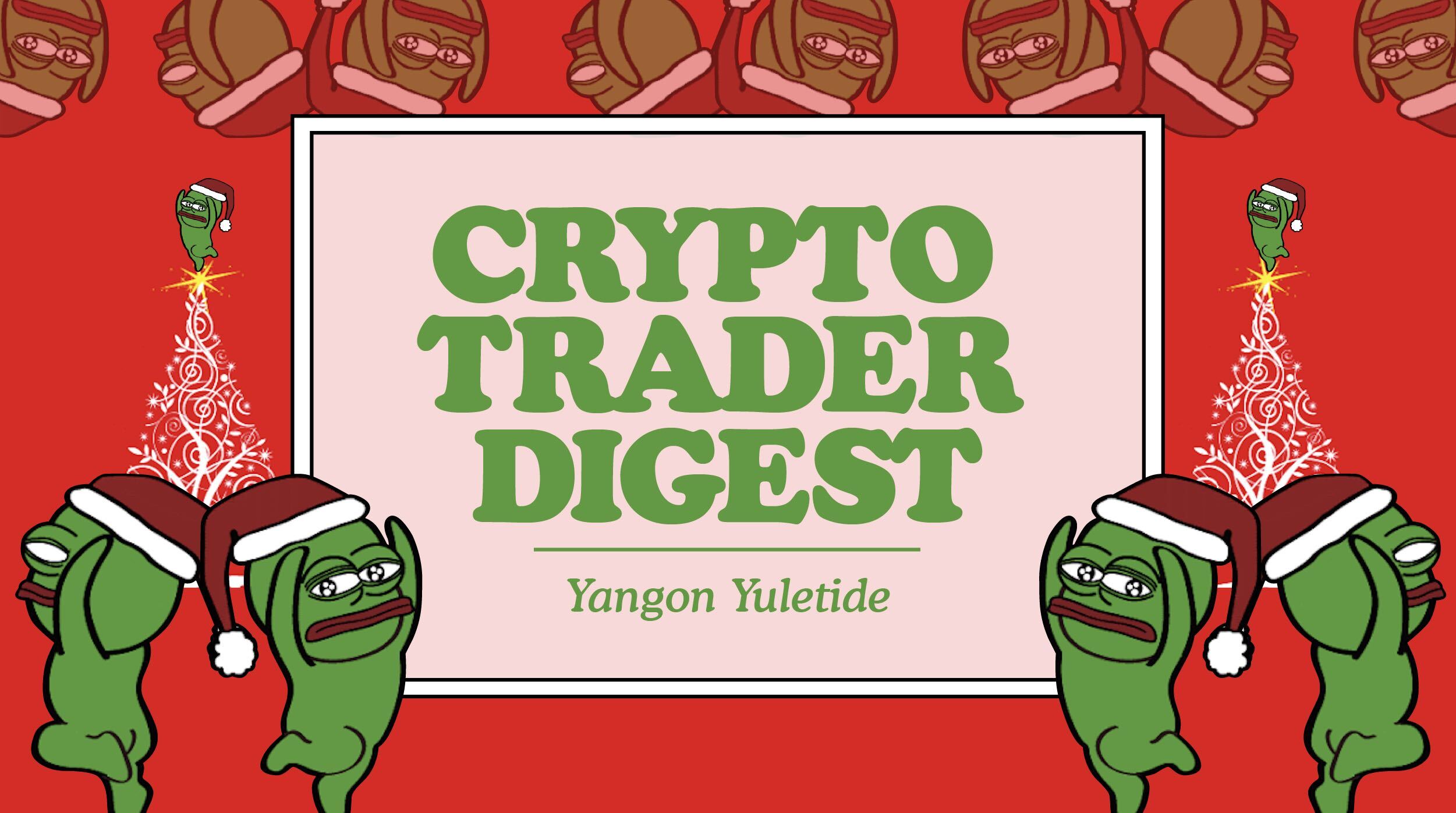
(Any views expressed in the below are the personal views of the author and should not form the basis for making investment decisions, nor be construed as a recommendation or advice to engage in investment transactions.)
We landed in Mandalay, departed the airport, and began our Myanmar adventure. It was December 2012, and apart from a few wide-eyed tourists, the airport and immediate vicinity felt empty – like a perfect Alfred Hitchcock movie setup.
After clearing immigration, we left a gleaming but empty airport, jumped into a vehicle from the 1980’s, and drove along a deserted highway. The taxi reminded me of my father’s car, which my brother and I used to refer to as the “bye-bye” car (because it might break down at any moment). It was a certified hooptie. We shared the four-lane expressway with a dude driving an ox-cart. Other than that, it was mid-day during the workweek and there wasn’t a soul to be seen as we entered the city.
I was with my bestie – my wannabe K-pop star / NBA player hedge fund bro friend. The last time he drove to the hoop, he was steering his SUV to the Staples Centre. He decided to spend his mandatory two-week leave on a South-East Asia adventure with me. During the first two weeks of December 2012, we hit Jakarta, Bali, Bangkok, Kuala Lumpur, Myanmar (Mandalay, Inle Lake, Bagan, and Yangon), and finished the trip driving across Sri Lanka.
My boy is real good with the internet, and did a lot of research on how to travel within Myanmar. A decade ago, many things we consider almost basic human rights did not exist. There was no mobile phone service, barely any internet connectivity, and no ATMs. They only accepted physical USD, but one had to be careful – as there were certain serial numbers that were not accepted. Wrinkled or torn notes weren’t accepted either – so we smushed all of our cash inside books so that the bills were flat and crisp.
Once you got over the lack of modern connectivity and financial services, what remained was a country bursting with potential, beautiful temples, and a welcoming populace. We hit a new city every day in order to cover as much of the country as possible in our short time there. We spent our last few days in Yangon, the commercial capital of the country. During the British colonial era, the city – which used to be called Rangoon – was one of their most prosperous colonies.
Situated between India, Thailand, and China, and with a deep-water port emptying out into the Andaman Sea, Myanmar possesses significant geostrategic value. The country is also rich in precious stones (e.g., rubies and jade), natural resources (they have vast untapped natural gas and oil reserves), and a large, young population (perfect for making knick-knacks to be sold on Amazon in exchange for dirt cheap wages). However, for various reasons, these natural blessings are not fully utilised, and the country was living decades in the past.
Wherever you are in the world, cultural and linguistic artifacts of the dominant empire permeate your existence. December in Yangon was no different. One of the most surprising aspects was the amount of Christmas decorations in and around Yangon. Myanmar is a Buddhist majority country, with a large Muslim minority. It is not a culture or country built upon Judeo-Christian values, nor is it so integrated into the global economy that a secular consumer holiday like Christmas would be assumed to be practiced.
Despite all of these factors, I heard all the classic Christmas tunes. I will always love you, Mariah! I saw snowmen in a tropical dusty city, jingle bells ringing, and Santa hats. The hostesses at many bars wore drab red and white garb to display their affiliation with this global year-ending ritual.
The Judeo-Christian liberal democratic empire has ignored Myanmar, but people there still absorbed some of its most important cultural aspects. Every society practices rituals and holds festivals to celebrate the death of one year and the rebirth of another. What a given population practices says many things about who really rules the roost.
When a people share similar cultural values, they share assumed beliefs and practices that need not be directly espoused. Winning the hearts and minds of the people is more important than your ability to project kinetic power. Occupying foreign territory without the defeated people accepting the victor’s culture can become quite the expensive boondoggle.
Every organisational structure, be it a nation state, religion, or networked state, needs to acquire and retain users. The transmission mechanism for the virus of belonging is culture and language. It is much easier to retain users into your value system if they share the same assumed beliefs as the culture looking to absorb them. Therefore, as we attempt to completely re-organise the world using stateless currencies and decentralised public blockchain permissioned networks, the culture of those networks will be just as important as the price of the coin and quality of the tech.
The first thing any coloniser does is destroy the oppressed populace’s connection to their heritage. They remove their traditional clothing, change their names, and eradicate their language. Then, they ensure the populace is brought up wearing “appropriate” clothing, using the “right” speech, and believing in the “real” god(s).
Everything comes from something. Crypto is a reaction against a fiat currency-driven, debt-based financial system and a centralised, top-down exclusive nation-state. It didn’t come out of the box with its own language and culture, but it has already begun developing its own vesion that is distinctly different from what it claims to rail against.
As many in the world celebrate the secular holiday using the symbols of an old fat white man riding down from the North Pole in a magical sleigh to bequeath presents to deserving children, let us think about how the crypto culture has evolved and the areas where we need fresh thinking to clearly break from the thing we wish to defeat.
Crypto Memes
Lest you doubt the power of memes, look no further than Elon Musk. Tesla as a company should be a big phat zero, but Elon is one the best meme artists this world has ever seen. Someone remarked to me that he has a team that only cranks out dank memes. Elon is worth hundreds of billions of USD because his memes are so on point.
Like a virus, memes infect the host’s mind with a narrative that is easy to intuitively understand and pass onto the next victim. The delivery mechanism of social media allows the meme to infect many hosts quickly.
We forget how powerful pictures are, but remember how all major global religions started. The major world religions acquired users at a time when books were expensive, and most people were illiterate. Priests built structures with pictures – the meme equivalent of the day – to tell the lay people the tenets of the religion.
Let’s run through some of the memes that constitute the bedrock of our current crypto culture. I will link to longer explanatory articles where I can, and then provide some contextualisation on why a particular meme is important.
HODL
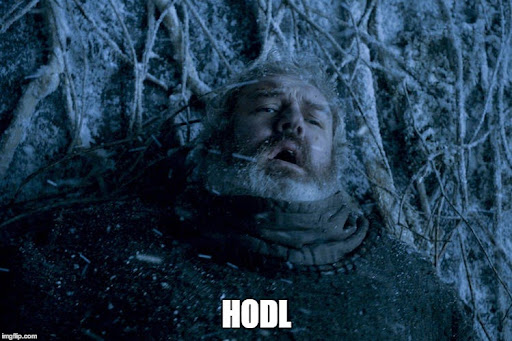
Hodl the fucking door! That was such a mind-blowing episode; it is a shame the last season sucked so hard.
Here is an article explaining the genesis of HODL.
Many people owned Bitcoin at some ludicrously low price only to sell it when it appreciated enormously in value. However, the meaning of enormous in 2013, 2017, and 2021 are universes apart. It takes extreme conviction to buy Bitcoin for a few bucks and still hold it when you are up 60,000x. That is the essence of HODL.
It takes even more belief to HODL when on paper, you watch the value of your crypto decrease by 90% or more. The battle cry of HODL is meant to instill holders of crypto with the confidence to stick with it and ride out the volatility.
Any new technology experiences volatile outcomes. Speculators and developers need to HODL if the ecosystem is to grow. The gyrations of progress of new technology will shake all but the extremely faithful. A culture of HODL’ing is essential to ensuring a critical mass of followers stick with the movement and continue to participate when things get tough.
Crypto has never been for the faint of heart, especially if you are someone who constantly checks the price of the coins in your portfolio. Engaging in that activity without an appropriate amount of belief in the HODL culture is a recipe for contracting bi-polar disorder.
Money Printer Go Brrr….
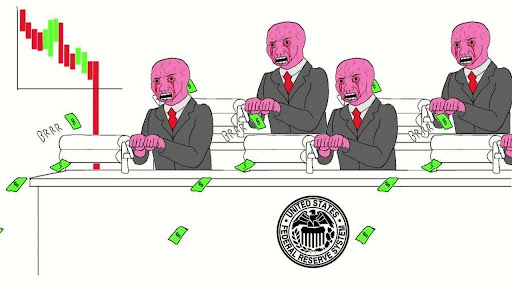 This is the original version of a classic meme, which has since given birth to a number of different permutations.
This is the original version of a classic meme, which has since given birth to a number of different permutations.
 This variation, in particular, cracked me up – I love the internet.
This variation, in particular, cracked me up – I love the internet.
It is undeniable that the 2008 global financial crisis and the central banks’ “fix” created fertile conditions for the birth of Bitcoin. Central banks – and the governments that empower them – responded to the Great Recession and every subsequent crisis by printing money. The printed money benefits selected connected companies and financial asset holders. Those whose earnings consist primarily of wages get fucked.
That is the essence of this meme. It is a rallying cry for all those who bristle at the hypocrisy practiced by governments that espouse market-based economic policies, but make the citizens pay for the bad business decisions of financial services institutions via inflation. Privatised gains and socialised losses – I’m not sure what economic “ism” that is, but if it were a religion it would definitely be on the come up.
I talk about some facet of central bank-sponsored monetary inflation in almost every essay I write. That’s because the gargantuan amount of printed money that global central banks have created is the primary driver behind the sick gainz the crypto markets have experienced since the March 2020 COVID crash.
The desire to create a system founded on trustless, sound money is a large motivation for many believers. This meme encapsulates that sentiment.
Wage Cuckin’

The mainstream financial media loves to write a good day trading, rags-to-riches story. It goes like this:
- An ordinary person who makes an average or median level income for a particular country discovers crypto.
- Said individual starts day trading.
- They catch some shitcoin that goes up 1,000x in a matter of weeks.
- Suddenly, they are worth millions of fiat dollars.
- Now they can quit their dreary job and join the ranks of the nouveau riche.
The follow-on story often published during the bear market goes something like this:
- Once upon a time, there was this person who became crypto rich.
- Then, the market dropped 90%, and they lost it all.
- They had to go back to working for the man. Sad face!
There is another popular recurring story about people who, due to their HODL’ing, have turned a few thousand dollars worth of crypto over the years into millions or billions of dollars due to price appreciation. Again, the stories suggest that these individuals are now about to live a different life that is completely divorced from the daily patterns of a salaried or hourly wage worker.
Do well at school (meaning get good grades; actual accumulation of knowledge is not the goal), get into university (hopefully the massive debt undertaken by yourself or your family is worth it), and then hopefully receive gainful employment that, over time, eclipses the costs incurred by you or your supporting family unit. This is the life arc preached in our modern global society.
That would be a fine strategy if the world’s money printers weren’t going brrr. Central banks are determined to generate inflation that outstrips the wage increases of the average worker. Earning a fixed wage has been a sucker’s bet since 1971, when Nixon removed the global reserve currency from the gold standard. The only way to stay ahead is to speculate in the financial asset markets.
This meme, which denigrates the work of Wojak – a fast food worker – encapsulates that message. Wojak was at one time crypto rich, but then he got rekt and had to go back to flipping burgers.
There is nothing wrong with flipping burgers or any other job that pays minimum wage. The dignity is only removed from this work when your government destroys the value of your labour by aggressively printing money to plug holes in the balance sheets of profligate companies who deserve bankruptcy, not a bailout.
That is the message of this meme, and it pokes fun at the orthodoxy surrounding the dignity of work. It is also indicative of the goal of many involved in the crypto markets – to rise above a daily existence where your time is consistently devalued.
Apes

To “Ape” is to mimetically imitate. Oooohhh that’s spicy. Any successful fictional idea that creates a form of organisation such as a nation, a religion, or a currency requires apes. We observe, and follow others.
The trading ethos of aping is the expression of a sometimes careless attitude towards asset allocation within the crypto ecosystem. When you ape into a project, the amount of research or critical thinking is de minimis. You follow the herd in quickly, and hopefully get out before the tastes of the masses shift. That is the essence of aping. If you spend too much time doing actual research, you miss out on a few X’s of pump.
Those who successfully imitate the herd, or anticipate where the attention of the group will shift, reap yuge monies. It is no wonder that the Bored Ape Yacht Club is one of the most successful and well-traded NFT projects. It is a visual representation of the ethos of many traders within the ecosystem.
Dog Money
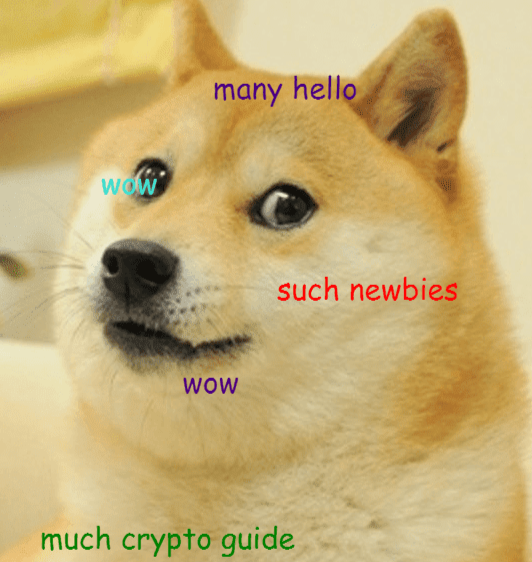
Shiba-Inu’s are so kawaii it hurts. Apparently they are not the most obedient dogs, but DILIGAF.
Jackson Palmer decided to see what would happen when you merged worthless tech with a cute dog picture. Woof Woof … here comes Dogecoin.
It is fitting that the crypto that is most talked about by Elon Musk, the master of memes, is Dogecoin. Worthless tech plus dank memes created billions of dollars’ worth of value for a car company and a cryptocurrency. It’s just that easy.
Many of the most highly valued coins deliberately do not focus on the technology. It’s as if the founders of these projects thought to themselves, “how shitty can I make the tech and still get people to buy the coin?” The buyers of these “meme” coins are happy to essentially open up a pit in the ground and burn energy (read: money) for no benefit.
They don’t value the fiat money that they earn because their governments inflate the quantity every single second of every single day. Why, then, should they buy the “right” kind of financial assets like stonks, bonds, and/or real estate? Why should they pay fees to some money manager just because they learned CAPM and other empirically worthless theories at the “right” university? Just buy objectively technologically-worthless cryptos, pamp their prices to unbelievable heights, and laugh as the global elite wag their fingers about how stupid they are for buying dog money.
Even though the meme coins’ technology doesn’t further the cause of decentralisation or sound stateless money, it is the spirit of crypto because it is an expression of dissatisfaction with the TradFi fiat system.
Feels Good Man
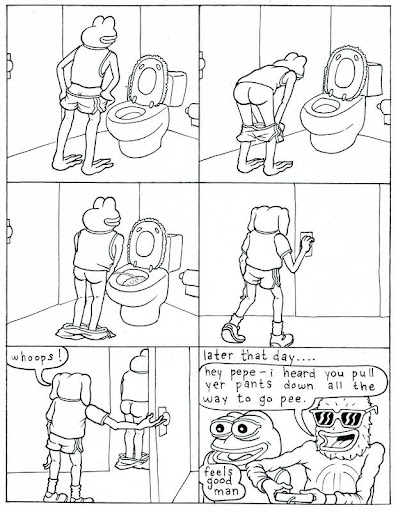
An essay about crypto memes and culture would not be complete without a discussion of Pepe the Frog.
Crypto, for whatever reason, co-opted a cute frog and turned him into a mascot. Pepe and the memes that use his image are a testament to how a community can change the conversation about a symbol if they all collectively decide it means something to them.
Using Pepe as a successful example, what other symbols can we take over and make our own? This symbol only has value because we have collectively decided it does. As with most ideas and myths, they cease to be valuable when the number of believers dwindles. We have the power to confer legitimacy on anything, as long as we act together.
That’s enough about Pepe.
How to Communicate
The above small selection of important cultural crypto memes tells the world who we are, what we believe in and what we despise. But it doesn’t help us communicate with those who don’t already get the joke. The language of crypto needs to adapt to meet the loftier goals we aspire to.
Tasked with producing a crypto-religious text, what would comprise it? How do we create a small yet impactful set of memes, phrases, and stories such that anyone can pick it up and, within a few hours, converse like they were a member of the tribe for many years?
A jargon-heavy language only creates another privileged club of those who “get it”. It is not inclusive, nor does it help recruit new members. What we don’t need is a language that takes years of mastery. Working on a trading floor, the most valuable thing you learn is how to communicate. It both speeds up transactions within the group and creates separation between the professionals and unwashed masses. However, learning this language is reserved for the thousands of professionals who are “lucky” enough to work in markets. That is not the recipe for a successful global movement.
Unfortunately, you don’t need to own crypto to lead a fulfilling life. Contrast that to learning your spoken and written language. In order to integrate with society, you must be able to communicate. If everyone around you speaks a certain language, you must spend the time to learn it. The most important part of early-childhood education is learning the language of the society in which you exist. Languages are not intuitive beyond a certain point. We sit in class and learn rules that make no sense for the sole purpose of communicating ideas to others who speak the same language.
My Mandarin hasn’t progressed beyond a certain point because, as an adult, I have more discretion with respect to how I spend my time, and rote writing of pictographs isn’t my favourite activity. That’s not to demean the language at all. Those who learn English later in life must contend with a whole set of irregular grammatical rules and conjugation of verbs that makes zero logical sense. I’m just lucky I learned the lingua franca of the dominant empire in my childhood, and not in my adulthood.
Let’s not assume that people have to learn our crypto language to participate fully in the culture. We must attack the problem from the vantage point of an upstart religion looking to challenge the dominant thought patterns of a society. It has been done before, and success comes by creating simple yet viral memes that, on one hand, attack the deficiencies of the dominant belief system, and on the other, show a bright and fulfilling future that’s easy to obtain if you just believe.
The COVID pandemic is a clusterfuck primarily of our own making. However, the various lockdown and money printing activities of almost every nation conditioned the population to spend more time on the internet and get pissed off at the rampant inflation created by central bankers. This is the substrate that allowed the crypto revolution to convert more hearts and minds.
The minority can be extremely powerful when paired against an apathetic majority. Nassim Taleb describes this in detail – how the preferences of minorities, even when they comprise low single-digit percentages of a sample, can sway the policy of the majority. As a vocal minority, we, Lord Satoshi’s followers, can punch above our weight.
But we must create a language that is distinctly different from what came before, that is also easy to learn. I’m not a linguist, but if we can self-reflect on how we describe the ecosystem, and attempt to simplify and create terms that are more easily digested, then the path to a larger herd becomes easier.
The biggest challenge will be reducing our usage of words and phrases that have specific concrete meanings in the old system, but loosely describe a particular crypto concept. An example would be the term “blue-chip”, which is used to connote premium, high-value financial assets like a stonk or piece of artwork. It has a specific evolution that occurred as the TradFi system came into its own during the early 20th century. We need a crypto-equivalent term to connote high value that also has an organic backstory unique to our culture. We must challenge our influencers to adapt their language to our specific crypto culture so we retain the power to define who we are and our belief story.
Success is at hand when those who don’t own crypto still buy into the culture, distribute the memes, and speak the language. When boomers start talking about how they got rekt because their Proctor and Gamble stock got rugged after some accounting statements were restated, we know that crypto culture virulency is at the appropriate level. We can all invest in the promulgation of our superior culture by being thoughtful about how and what we communicate. As many of you readers gather around a coniferous tree that is not indigenous to your terroir and give thanks to each other through gift giving, use that as a reminder of how powerful culture is and dedicate yourself to adding value to the crypto expression of its belief system.
